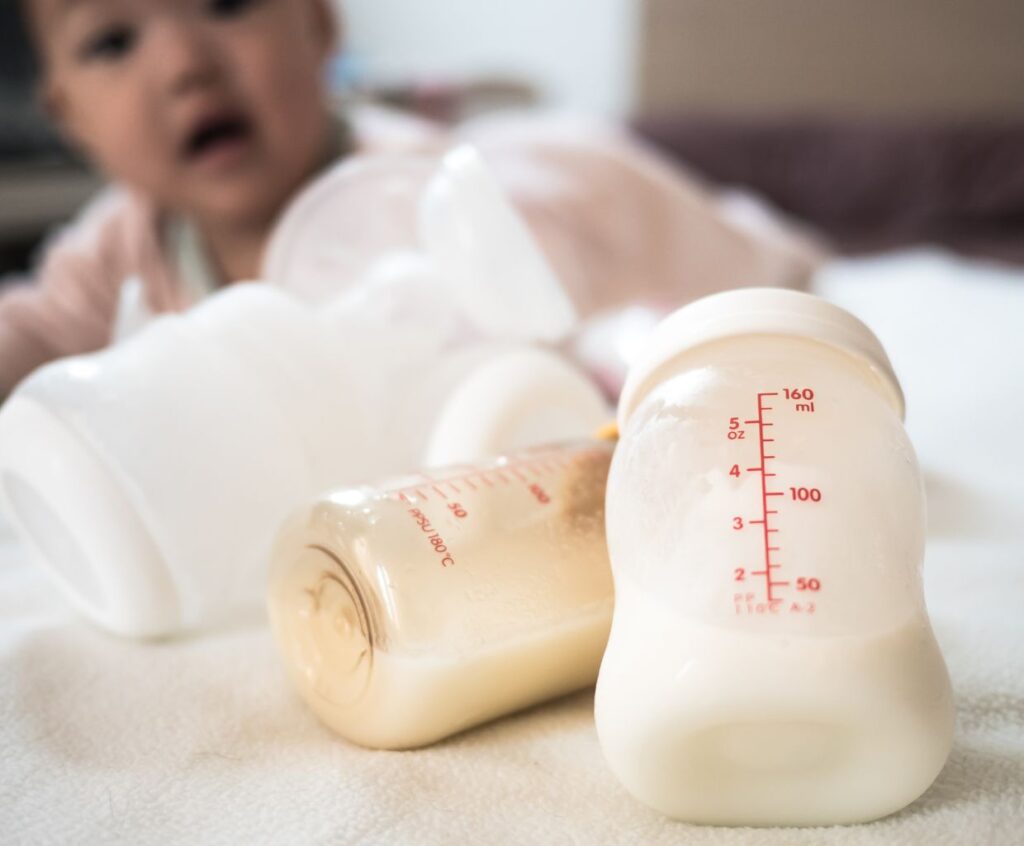How To Wean Off Pumping Without Engorgement?
Are you a breastfeeding mom who has been relying on pumping to provide breast milk for your little one? Weaning off pumping can be challenging, especially if not done gradually. However, with a few tips and tricks, you can successfully transition from pumping without experiencing uncomfortable engorgement.
This article will discuss the steps you can take to wean off pumping while keeping engorgement at bay.
1. Gradual Reduction
One of the most effective ways to wean off pumping without engorgement is to reduce the frequency and duration of your pumping sessions. Start by eliminating one pumping session daily and slowly decrease the time spent pumping during each remaining session. This gradual reduction allows your body to adjust and decrease milk production without causing excessive engorgement.
2. Nurse More Frequently
If your baby is old enough and can latch adequately, increase the frequency of nursing sessions. Encouraging your little one to nurse directly from the breast can help relieve engorgement and stimulate your body to adjust milk production according to your baby’s needs. As you gradually decrease pumping, offer the breast to your baby whenever they show signs of hunger to help maintain a steady milk supply.
3. Cold Compresses
If you experience discomfort or engorgement during the weaning process, apply cold compresses to your breasts. This can help reduce swelling and relieve pain. Wrap ice packs or a bag of frozen peas in a thin cloth and gently apply them to your breasts for 15-20 minutes. Remember to break your breasts between each application to prevent any potential damage.
4. Cabbage Leaves
Believe it or not, cabbage leaves have been used for centuries to alleviate engorgement during weaning. Place chilled cabbage leaves on your breasts, covering the entire area. Leave them on for about 20 minutes or until they reach room temperature. Many women find this natural remedy helpful in reducing engorgement and promoting comfort during the weaning process.
Are there any specific foods or supplements that can help reduce engorgement while weaning off pumping?
When weaning off pumping, no specific foods or supplements have been proven to reduce engorgement. However, some strategies may help alleviate discomfort:
1. Gradual weaning: Gradually reduce the time you spend pumping to allow your body to adjust slowly and decrease milk production gradually. Abruptly stopping pumping can lead to increased engorgement.
2. Cold compresses: Applying cold compresses to the breasts can help reduce swelling and discomfort. You can use ice packs, chilled cabbage leaves, or a cool cloth.
3. Cabbage leaf compresses: Some women find relief by placing chilled cabbage leaves directly on their breasts. The leaves are believed to have anti-inflammatory properties. Change the leaves every 2 hours or when they become wilted.
4. Tight-fitting bra: Wearing a well-fitting and supportive bra can provide some relief by reducing movement and pressure on the breasts.
5. Pain relief: Over-the-counter pain relievers like ibuprofen or acetaminophen can help manage the discomfort associated with engorgement. Always consult your healthcare provider before taking any medication, especially breastfeeding.
Remember, engorgement usually resolves on its own within a few days as your body adjusts to the reduced demand for milk. If you experience severe or prolonged pain or have concerns about engorgement, it is best to consult a lactation consultant or healthcare provider for personalized advice and support.
Is replacing pumping sessions with hand expression or breastfeeding necessary to prevent engorgement during the weaning process?
Reducing milk production to prevent engorgement gradually is essential during the weaning process. One way to do this is gradually replacing pumping sessions with hand expression or breastfeeding. By gradually reducing the frequency and duration of pumping or breastfeeding sessions, the body will adjust and produce less milk over time. This can help prevent engorgement and discomfort.
However, every person’s body is different, and listening to your body and adjusting the weaning process is essential. If you are experiencing significant engorgement or discomfort, seeking guidance from a lactation consultant or healthcare provider may be helpful.
Are there any potential complications or risks associated with weaning off pumping without experiencing engorgement?
While weaning off pumping without experiencing engorgement is generally a positive outcome, there can still be potential complications or risks. These may include:
1. Clogged ducts: Abruptly stopping pumping or breastfeeding can lead to the formation of clogged ducts, which can cause discomfort and pain. It is important to gradually reduce pumping sessions to allow the body to slowly adjust and decrease milk production.
2. Mastitis is an infection of the breast tissue that can occur if milk is not adequately drained from the breasts. Abruptly stopping pumping can increase the risk of mastitis. Signs of mastitis include breast pain, redness, warmth, and flu-like symptoms. Seek medical attention if these symptoms occur.
3. Milk supply issues: Stopping pumping suddenly can result in a decrease in milk supply. Gradually reducing pumping sessions and monitoring milk production can help prevent a sudden drop in supply.
4. Emotional changes: Weaning off pumping or breastfeeding can be emotional for some individuals. Hormonal changes can occur during this time, which may lead to mood swings or feelings of sadness. Seeking support from loved ones or healthcare professionals if needed is essential.
It is recommended to consult with a healthcare professional or lactation consultant for guidance on weaning off pumping or breastfeeding without experiencing engorgement or other complications. They can provide personalized advice based on individual circumstances.
Conclusion
Weaning off pumping without engorgement is achievable with a gradual reduction in pumping sessions, increased breastfeeding, and using cold compresses or cabbage leaves to relieve discomfort. Remember, every woman’s breastfeeding journey is unique, so listening to your body and adjusting your weaning process is essential. By following these tips, you can successfully transition away from pumping while maintaining your milk supply and minimizing engorgement.


